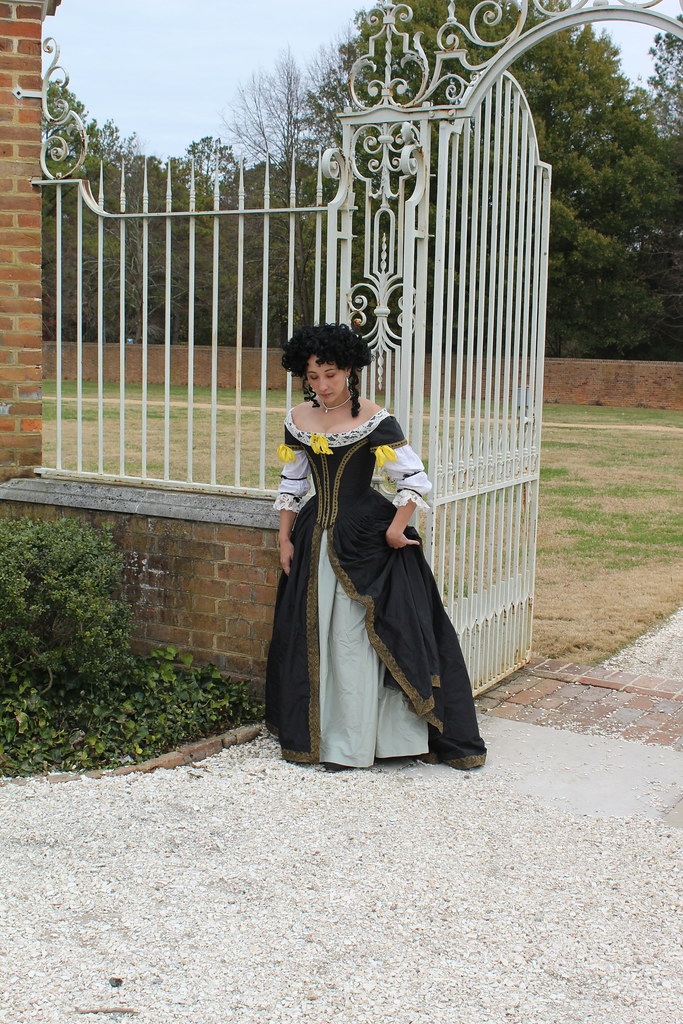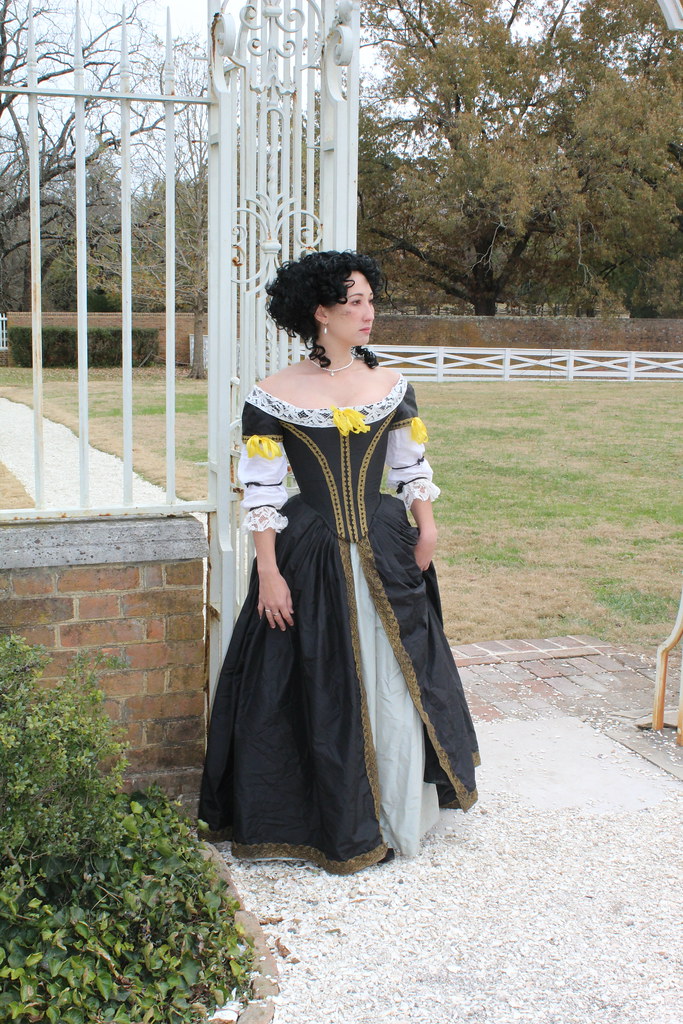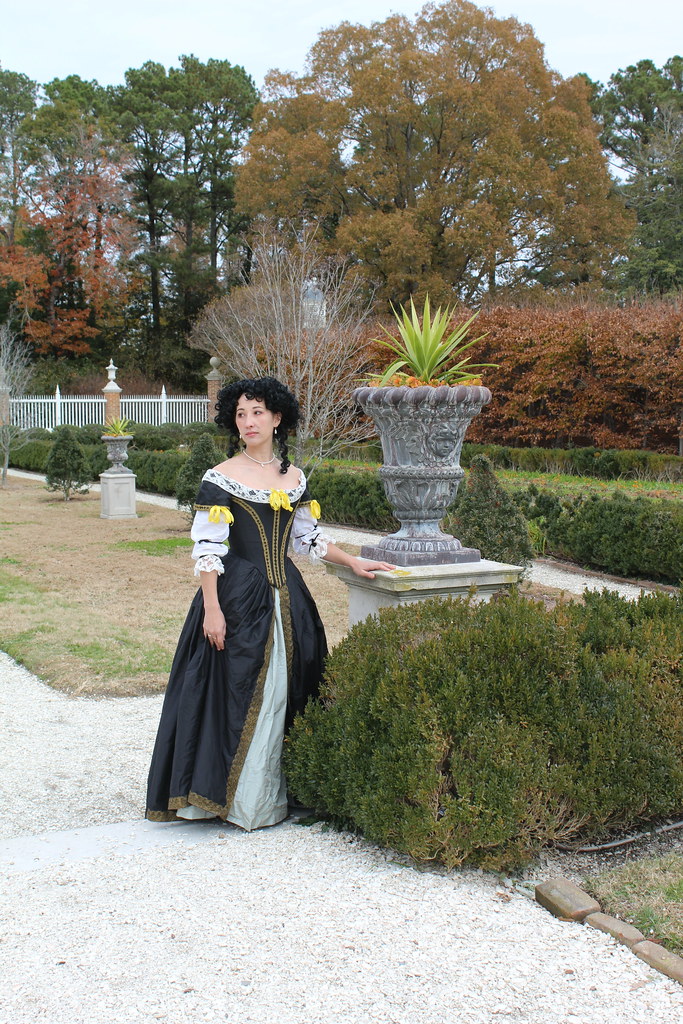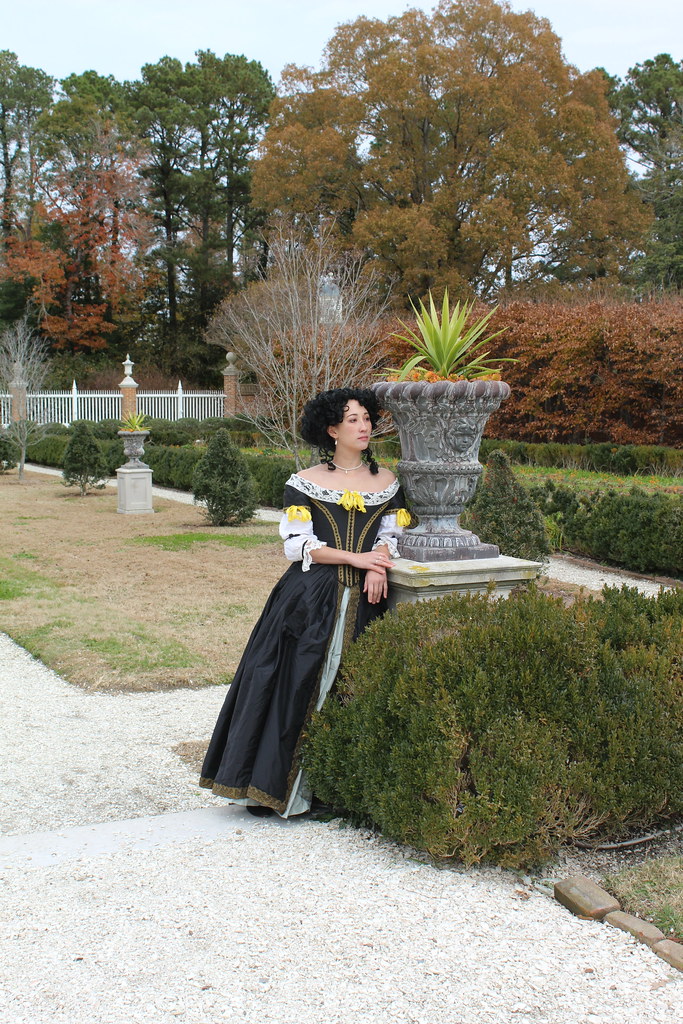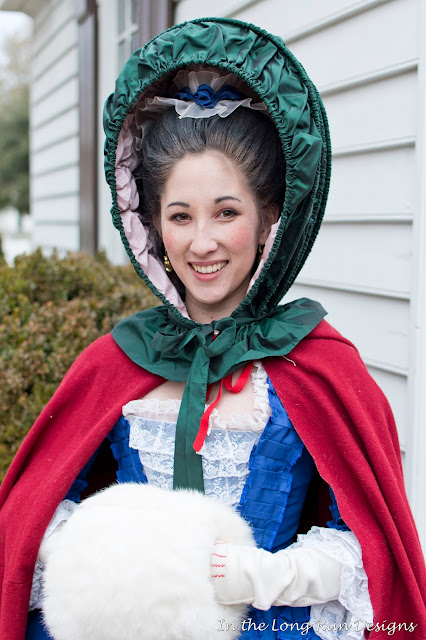My museum focuses on the first quarter of the 17th century about 99% of the time. Every now and then we get thrown a curve ball by the powers that be and are asked to do something outside of our usual time frame. For example, we're going to have a new "4-D" film experience in our galleries and it was decided it would be cool to have it be about Bacon's Rebellion in 1676, a little-known but rather interesting occurrence in early Virginia history. My colleagues and I in the historical clothing department had largely written off the project because the production company the museum hired would be doing the costuming themselves. Well, long story short, they needed last minute extras, so Britney and I did the crazy thing of making 1670s outfits for ourselves in less than a week so we could help with the filming. My friend Julie was in charge of the women's costuming for the project and was glad for some relief from being asked to make half a dozen 1670s gowns in a very short time frame (yay film!). All told, I made my gown in 4 full work days and a couple evenings at home. It's mostly machine sewn, even the eyelets because we have an awesome attachment for our Bernina 1008 machines. But since it was for film and no one would see this up close, it didn't matter!
Making this gown in that kind of time frame was ridiculous, but it totally gave me the bug for the 1670s-90s and I desperately want to make my own gown with more correct techniques in the future (this one technically belongs to the museum). Luckily I now have a perfectly-fitting pattern and a copy of Patterns of Fashion 5 (!!!) to help with construction. Even so, I think it looks darned good for a rush job! I find the bodice to be extremely comfortable and it's just a very flattering style and silhouette, even with the crazy hair.
The gown consists of a boned bodice ("smooth-covered stays" according to POF 5), a petticoat, and an over-skirt. Everything is silk taffeta and the trim is vintage real metal lace that had been sitting in the shop for ages because it's really too fancy for what we do here. To get dressed, I put on my shift (and stockings, shoes, etc) and then a plain under-petticoat and the pale blue silk petticoat over that. Next the bodice goes on, lacing in the back. The over-skirt was pleated to a tape which ties in the front under the center point of the bodice, with the skirt covering the tabs of the bodice that go around the waist.
The wig... Oh, the wig! I love this thing. It's the super cheap "Boogie Babe" wig you can get on Amazon for like $15 bucks and it's awesome for how cheap it is! I bought it on Britney's recommendation for late 1790s stuff but it very handily became a 1670s style for the filming so I didn't have to curl my own (ridiculously long) hair.
We did take a bunch of pictures on set in costume but we technically can't share them until the project is finished some time next year. Thankfully my dear Katie was willing to take pictures for me when she and her husband visited us for Christmas. I love how they turned out! So here is the 1676 gown of madness...
